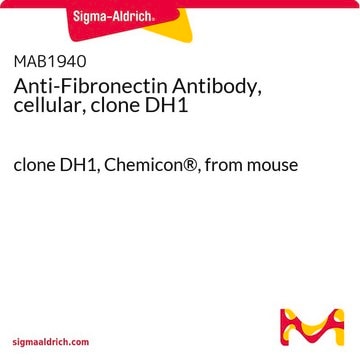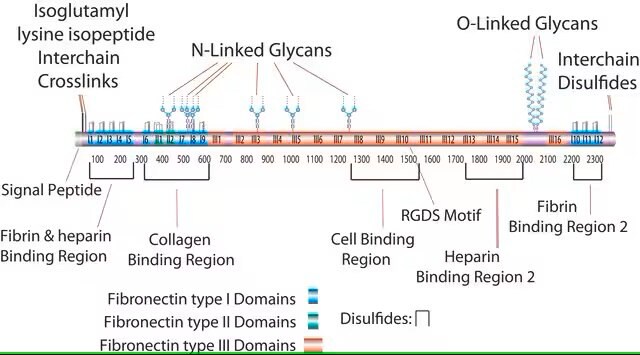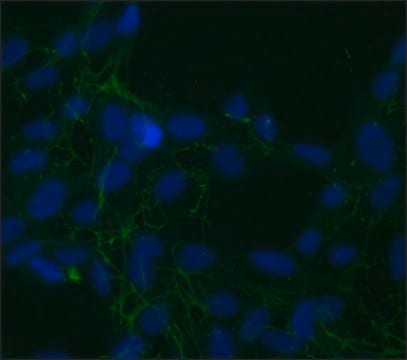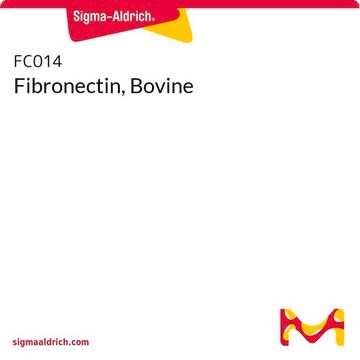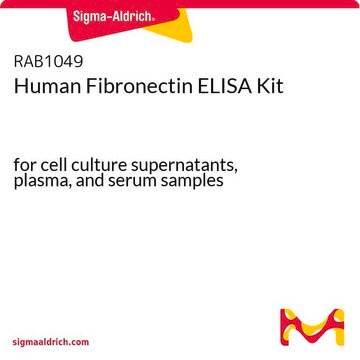F2518
Human Fibronectin
from human foreskin fibroblasts, powder, suitable for cell culture
Synonym(s):
Fibronectin
About This Item
Recommended Products
Product Name
Fibronectin human foreskin fibroblasts, lyophilized powder, suitable for cell culture
biological source
human foreskin fibroblasts
Quality Level
product line
BioReagent
form
lyophilized powder
mol wt
~550 kDa
packaging
pkg of 0.5 mg
technique(s)
cell culture | mammalian: suitable
surface coverage
1‑5 μg/cm2
impurities
Human Source, none detected (HCV)
Human Source, none detected (HIV)
Human Source, none detected (HTLV)
Human Source, none detected (HbSAg)
Microbial Contamination, passes test
Looking for similar products? Visit Product Comparison Guide
General description
Application
Biochem/physiol Actions
Features and Benefits
- Fibronectin is isolated from human foreskin fibroblasts maintained in serum-free medium.
- It can be used as a cell attachment factor for various cell types, including epithelial, mesenchymal, neuronal, neural crest, endothelial cells, and fibroblasts.
- The starting material is tested and found negative for HIV and HBsAg.
- The product is soluble in sterile water, yielding a clear, colorless solution.
- It can be stored at -20°C for at least three years.
Caution
Physical form
Preparation Note
Reconstitution
Analysis Note
Storage Class
11 - Combustible Solids
wgk_germany
WGK 3
flash_point_f
Not applicable
flash_point_c
Not applicable
ppe
Eyeshields, Gloves, type N95 (US)
Choose from one of the most recent versions:
Certificates of Analysis (COA)
Don't see the Right Version?
If you require a particular version, you can look up a specific certificate by the Lot or Batch number.
Already Own This Product?
Find documentation for the products that you have recently purchased in the Document Library.
Customers Also Viewed
Articles
Fibronectin (FN) plays crucial roles in extracellular matrix fibril assembly and cellular interactions.
Extracellular matrix proteins such as laminin, collagen, and fibronectin can be used as cell attachment substrates in cell culture.
Cancer stem cell media, spheroid plates and cancer stem cell markers to culture and characterize CSC populations.
Protocols
Dilute fibronectin for cell attachment, varying per cell type. Coating protocol, products, and FAQs provided.
Our team of scientists has experience in all areas of research including Life Science, Material Science, Chemical Synthesis, Chromatography, Analytical and many others.
Contact Technical Service


